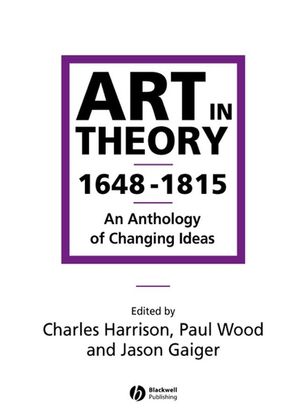Michael B. Schiffer: Power Struggles: Scientific Authority and the Creation of Practical Electricity Before Edison (2008)
Filed under book | Tags: · 1800s, electricity, electromagnetism, history of technology, light, technology

In 1882, Thomas Edison and his Edison Electric Light Company unveiled the first large-scale electrical system in the world to light a stretch of offices in a city. This was a monumental achievement, but it was not the beginning of the electrical age. The first electric generators were built in the 1830s, the earliest commercial lighting systems before 1860, and the first commercial application of generator-powered lights (in lighthouses) in the early 1860s. In Power Struggles, Michael Brian Schiffer examines some of these earlier efforts (both successful and unsuccessful) that paved the way for Edison.
After laying out a unified theoretical framework for understanding technological change, Schiffer presents a series of fascinating case studies of pre-Edison electrical technologies, including Volta’s electrochemical battery, Thomas Davenport’s electric motor, the first mechanical generators, Morse’s telegraph, the Atlantic cable, and the lighting of the dome of the U.S. Capitol. Schiffer discusses claims of “practicality” and “impracticality” (sometimes hotly contested) made for these technologies, and examines the central role of the scientific authority—in particular, the activities of Joseph Henry, mid-nineteenth-century America’s foremost scientist—in determining the fate of particular technologies.
These emerging electrical technologies formed the foundation of the modern industrial world. Schiffer shows how and why they became commercial products in the context of an evolving corporate capitalism in which conflicting judgments of practicality sometimes turned into power struggles.
Publisher MIT Press, 2008
Lemelson Center Studies in Invention and Innovation Series
ISBN 0262195828, 9780262195829
420 pages
Barri J. Gold: ThermoPoetics: Energy in Victorian Literature and Science (2010)
Filed under book | Tags: · 1800s, energy, entropy, literature, physics, science

In ThermoPoetics, Barri Gold sets out to show us how analogous, intertwined, and mutually productive poetry and physics may be. Charting the simultaneous emergence of the laws of thermodynamics in literature and in physics that began in the 1830s, Gold finds that not only can science influence literature, but literature can influence science, especially in the early stages of intellectual development. Nineteenth-century physics was often conducted in words. And, Gold claims, a poet could be a genius in thermodynamics and a novelist could be a damn good engineer.
Gold’s lively readings of works by Alfred Tennyson, Charles Dickens, Herbert Spencer, Bram Stoker, Oscar Wilde, and others offer a decidedly literary introduction to such elements of thermodynamic thought as conservation and dissipation, the linguistic tension between force and energy, the quest for a grand unified theory, strategies for coping within an inexorably entropic universe, and the demonic potential of the thermodynamically savvy individual. Victorian literature embraced the language and ideas of energy physics to address the era’s concerns about religion, evolution, race, class, empire, gender, and sexuality. Gold argues that these concerns in turn shaped the hopes and fears expressed about the new physics. With ThermoPoetics Gold not only offers us a new lens through which to view Victorian literature, but also provides in-depth examples of the practical applications of such a lens. Thus Gold shows us that in In Memoriam, Tennyson expresses thermodynamic optimism with a vision of transformation after loss; in A Tale of Two Cities, Dickens produces order in spite of the universal drive to entropy, and in Bleak House he treats the novel itself as series of engines; and Wilde’s Dorian Gray and Stoker’s Dracula reveal the creative potential of chaos.
Publisher MIT Press, 2010
ISBN 026201372X, 9780262013727
343 pages
Charles Harrison, Paul Wood, Jason Gaiger (eds.): Art in Theory 1648-1815: An Anthology of Changing Ideas (2001)
Filed under book | Tags: · 1600s, 1700s, 1800s, art, art criticism, art history, art theory

“Art in Theory (1648-1815) provides a wide-ranging and comprehensive collection of documents on the theory of art from the founding of the French Academy until the end of the Napoleonic Wars. Like its companion volumes, Art in Theory (1815-1900) and Art in Theory (1900-1990), its primary aim is to provide students and teachers with the documentary material for informed and up-to-date study. Its 240 texts, clear principles of organization and considerable editorial content offer a vivid and indispensable introduction to the art of the early modern period.
Harrison, Wood and Gaiger have collected writing by artists, critics, philosophers, literary figures and administrators of the arts, some reprinted in their entirety, others excerpted from longer works. A wealth of material from French, German, Italian, Spanish, Dutch and Latin sources is also provided, including many new translations.
Among the major themes treated are early arguments over the relative merits of ancient and modern art, debates between the advocates of form and color, the beginnings of modern art criticism in reviews of the Salon, art and politics during the French Revolution, the rise of landscape painting, and the artistic theories of Romanticism and Neo-classicism.
Each section is prefaced by an essay that situates the ideas of the period in their historical context, while relating theoretical concerns and debates to developments in the practice of art. Each individual text is also accompanied by a short introduction. An extensive bibliography and full index are provided.”
Publisher Blackwell, 2001
ISBN 9780631200642
1220 pages
Reviews: Richard Woodfield (Journal of Aesthetics and Art Criticism, 2003), Patricia Railing (Art Book, 2004).
PDF (updated on 2012-7-18)
Comment (0)
